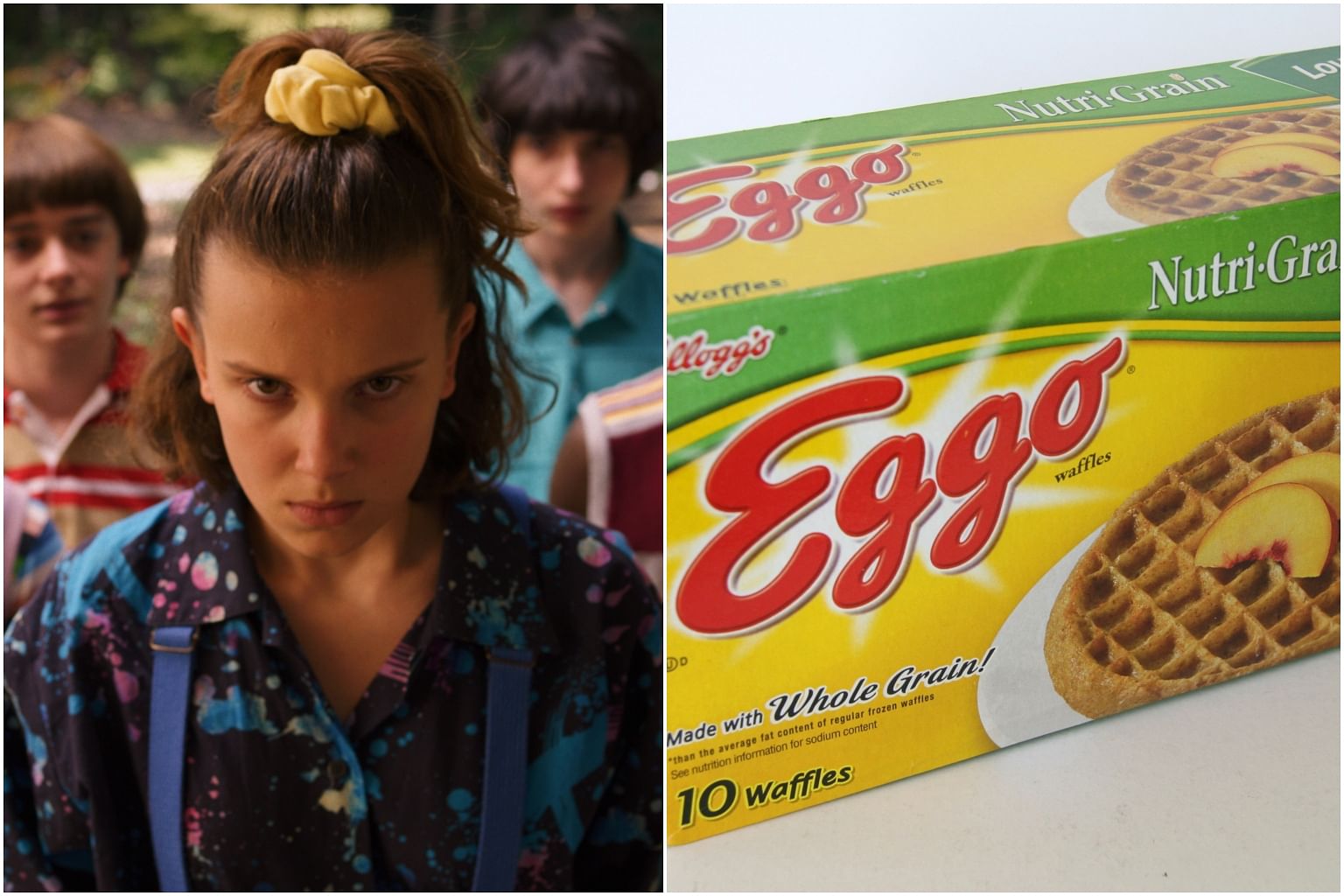NEW YORK (NYTIMES) - Refrigerators are not movie stars, but they can pose a particular problem when they have a cameo on screen.
When comedian Larry David casually opens the door in sitcom Curb Your Enthusiasm (2000 to present), those shelves need to be full of food and drink, and each one of those items is likely to have a brand: Perrier sparkling water, Pacific chicken broth, Clover cottage cheese. The fridge itself will have a brand, of course. All of this must usually be negotiated through carefully considered placements that give these products their 15 seconds (or less) of fame.
Product placement has long been a feature of Hollywood. Seeking a boost in brand recognition and association with cool characters, makers of beverages and cars, especially, have for decades paid or engaged in a quid pro quo to get their products into films.
The first documented example was in 1896, when brothers Auguste and Louis Lumiere, often credited as the earliest film-makers, agreed to feature soap in their film, Washing Day In Switzerland.
But the rise of streaming has led to an explosion in product placement. Brands are looking for new ways to get eyeballs on their products, and productions are looking for creative ways to offset costs. Product placement is now a US$23 billion (S$32.2 billion) industry, up by an estimated 14 per cent since 2020.
Mr Mike Proulx of research consultancy Forrester said: "It's the holy grail for a brand to be integrated into the actual content itself." But product placement, often maligned for its obviousness, has to walk a thin line between showing off the product and fading seamlessly into the background.
Agencies such as Hollywood Branded connect the brands they represent with scriptwriters, producers, set decorators and prop masters, who might in turn work them into storylines.
"Products are part of our lives - they just are," said Ms Stacy Jones, Hollywood Branded's chief executive. "Say you have a Montblanc pen - you automatically think, that character has a pen worth hundreds, if not thousands, of dollars."
Items can also function as narrative shorthand in scripts. "If you have a female whisky drinker, you know she'll be a bada** character," said Ms Erin Schmidt, chief product placement officer at Branded Entertainment Network, another agency that helps to coordinate product placement.
The majority of product placement in film and television, Ms Jones said, happens on a quid pro quo basis rather than in exchange for payment. A car company might lend an expensive car to a set in exchange for an appearance in the show, or S'well might mail a case of water bottles to prop masters for consideration.
There are paid placements, too, but particularly with large streaming companies like Netflix and HBO, it is more frequently a matter of finagling loan-and-trade agreements to reduce production budgets.
Ms Ruby Moshlak, a self-identified prop mistress on the sets of television shows and films, is often working on a tight budget to create a realistic fictional world.
"There's nothing like a US$5,000 espresso set-up, free of charge," she said.
She described a delicate dance of finding the right object for the right character, like which car singer-actress Queen Latifah should drive in crime drama The Equalizer (2021 to present).
"The Jaguar crossover sport utility vehicle really suited the character well," Ms Moshlak said. "It's kind of a mum car, but still pretty cool, with a retail value under US$50,000, which is of upper-middle class, but not anything so different than the sedan."
She was able to get it for free in exchange for the exposure.
Which is not to say that product placement always goes smoothly. Blatant product placement can both hurt a plot line and strain credibility.
"If James Bond were shown drinking only milk, or getting in a Ford Fiesta and not an Aston Martin, viewers would feel that crossed some kind of line," said Dr June Deery, a professor of media studies at Rensselaer Polytechnic Institute who has studied the commercialisation of American media. Also, the constraints associated with specific contracts can be creatively limiting.
"Two years ago, I worked on a rom-com with really big actors in it, and it was gross," Ms Moshlak said. "In every scene, there was an in-place money agreement. There was a kitchen appliance that was in a third of the movie for more than US$1 million - literally written into the story."
The success of product placement as a marketing strategy relies on the interplay between the suspended reality on screen and the free market economy of the off-screen world.

It became obvious just how powerful this exchange can be when a character in Sex And The City spin-off And Just Like That... (2021 to present) had a heart attack while riding a Peloton - causing the real-life brand's stock to plunge.
On the flip side, breakfast brand Eggo was reinvigorated when it was featured in the science-fiction series Stranger Things (2016 to present) as a key plot point. After some years of lagging sales, there was reportedly a 14 per cent spike after the show's first season aired.
More than a prop
While traditional product placement has been oriented mostly around objects, less tangible brands are also seeking placements. Real estate search site Zillow, for instance, approached Branded Entertainment Network roughly six years ago about making its way into scripts.
"Zillow is really looking to capitalise on life change - marriage, moving, a new job, things like that," Ms Schmidt said. "So we just go to the creator community and bring that essence to them, and then they'll come to us and say, 'I have this great opportunity in which a character is moving to Chicago for a new job. Maybe we can bring Zillow in there.'"
The site ended up in comedy Grace And Frankie (2015 to 2022), coming-of-age comedy-drama Never Have I Ever (2020 to present), romantic drama Sweet Magnolias (2020 to present), revenge thriller film Promising Young Woman (2020), rom-com movie Book Club (2018) and adventure comedy film Clifford The Big Red Dog (2021), among others - and the agency experimented with different strategies for working it in.
Ms Schmidt said that verbal mentions, inserted in the script, worked well for Zillow. "We found really fun ways to integrate it verbally, like, 'I Zillowed his house and it's only worth x," she added. "Saying 'I'm going to Zillow that house' became part of the cultural norm."
Tech companies are experimenting with tools to place products into shows that have already been taped and artificial-intelligence solutions that could swop one brand of alcohol for another, or a bottle of Pepsi for what might have been Coke - essentially selling placements like advertisement space for different markets.
Ms Jones noted that this can be tricky to pull off successfully, given that it can be a kind of art to select what belongs on screen in the first place, almost akin to a casting process for objects.

At an industry conference in May, Amazon announced that it would be experimenting with a beta version of "virtual product placement", which the company is testing in shows like crime thriller Reacher (2022 to present), action thriller Jack Ryan (2018 to present) and the Bosch franchise.
"It creates the ability to film your series without thinking about all that is required with traditional placements during production," Mr Henrik Bastin, chief executive of Fabel Entertainment and executive producer of Bosch: Legacy (2022 to present), said at the conference.
"Instead, you can sit with the final cut and see where a product could be seamlessly and naturally integrated into the storytelling."
An exemplary still from Bosch shows M&M's edited into a scene next to an office coffee machine.

